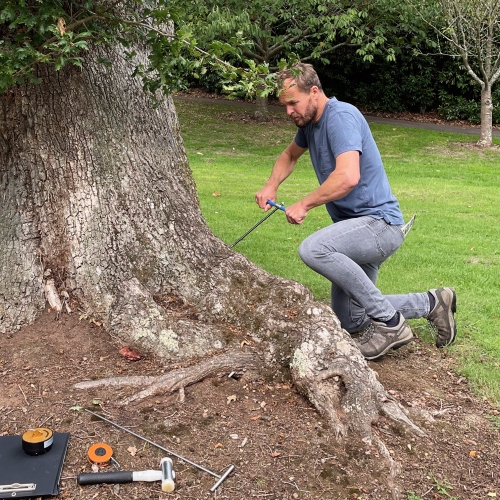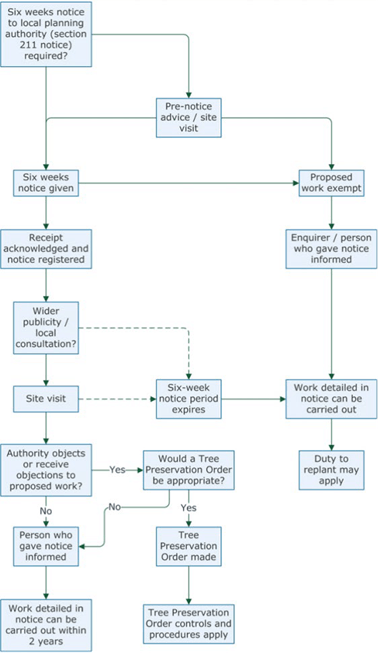Statutory Protection
Tree Preservation Orders (TPOs) and conservation areas are key aspects of urban planning. However, they can be fraught with difficulties, particularly if documents aren’t accurate.
I can work with Local Planning Authorities (LPAs) to ensure that things go smoothly. Moreover, I can ensure that trees are managed sensibly: my advice is based on industry best practice and up-to-date research.
Clients find that I can add weight to an application. To save them time and effort, I can also act as their agent and make applications or notifications on their behalf.
Tree Preservation Orders

A TPO can protect individual trees, trees within an area, groups of trees or whole woodlands. Protected trees can be of any size or species, provided they are ‘anything that may ordinarily be termed a tree’. LPAs use TPOs to protect selected trees and woodlands if their removal would have a significant negative impact on the local environment and its enjoyment by the public.
An LPA can make a TPO if it appears to be ‘expedient in the interests of amenity to make provision for the preservation of trees or woodlands in their area’. Amenity is mainly associated with a tree’s visibility from a public space, though there is no clear legal definition in law.
TPOs are made under the Town and Country Planning Act 1990 (as amended by the Town and Country Planning (Tree Preservation) (England) Regulations 2012), which prohibits the cutting down, topping, lopping, uprooting, wilful damage and wilful destruction of trees, without the LPA’s written consent. Cutting roots is also prohibited and requires the LPA’s consent.
How I can help
Before authorities make or confirm an order, they need to show that protection would bring a reasonable public benefit now or in future. Accurate information here is vital; if anything is omitted from the order, the TPO may be flawed and ineffective. I can support the LPA to gather information – such as through a site visit – and make certain that the TPO document is valid and has all the essential components. These methods can also be used for private tree owners to evaluate existing TPO documents and determine their validity.
Conservation areas
Trees not protected by a TPO in a conservation area are safeguarded by provisions of section 211 of the Town and Country Planning Act 1990. These require the notifier, or an agent (on behalf of the notifier), to inform the LPA of any work being carried out to trees six weeks in advance through a section 211 notice. This notice doesn’t have to be in any specific form; a standard form is available from the Planning Portal, but the LPA cannot insist on it.
This six-week period gives the LPA an opportunity to consider whether to make a TPO on the tree(s). The LPA must decide if a TPO is justified in the interests of amenity and, if so, should make a TPO. If they decide not to make a TPO, they can inform the notifier that the work can go ahead or allow the notice period to expire, in which case the notifier may proceed.
Exceptions for submitting Section 211 notices are:
- Trees with a stem diameter up to 75 mm (10 0mm if thinning as part of forestry operations)
- Works by or on behalf of the LPA
- On land of interest to the Forestry Commission
- Works in accordance with a felling licence
- Where there is an immediate risk of serious harm or if the tree is dead. However, LPAs require written notice as soon as practicable, or five days’ notice respectively
Work to trees in a conservation area: the process
